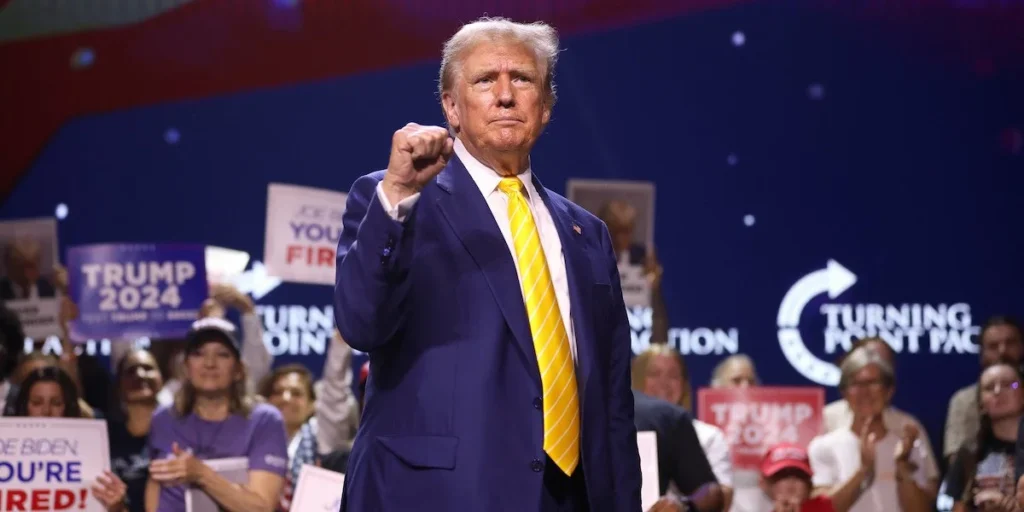
With President-elect Donald Trump preparing to take office, significant shifts in U.S. climate policy are expected. Trump’s climate policy reversal plans include boosting fossil fuel industries and easing federal environmental regulations. These changes stand in contrast to President Joe Biden’s climate initiatives, which focused on cutting emissions, promoting renewable energy, and achieving net-zero carbon goals. Trump’s incoming administration signals a return to policies that prioritize economic growth, often at the expense of stringent environmental protections.
Background on Biden’s Climate Initiatives
Under President Biden, the U.S. rejoined the Paris Agreement and established an ambitious agenda to combat climate change. His administration set a target for the country to achieve net-zero greenhouse gas emissions by 2050 and reduce carbon emissions by 50% by 2030. Key aspects of Biden’s climate initiatives included funding for renewable energy projects, investments in green infrastructure, and regulations aimed at reducing pollution. Biden’s policies were largely geared toward addressing the global climate crisis and establishing the U.S. as a leader in environmental responsibility.
Trump’s Climate Policy Reversal: An Overview
President-elect Trump’s approach diverges sharply from Biden’s environmental goals. His climate policy reversal plans aim to roll back many of these initiatives, with a particular emphasis on reducing regulatory constraints for energy industries. Trump has frequently voiced support for coal, oil, and gas as pillars of the U.S. economy. His administration plans to dismantle federal restrictions that limit fossil fuel production, which could lead to increased greenhouse gas emissions and weakened environmental standards.
Key Areas of Focus in Trump’s Climate Policy Reversal
- Fossil Fuel Production and Deregulation Trump’s climate policy reversal will likely center on increasing fossil fuel production and dismantling restrictions placed on energy industries under the Biden administration. The Trump administration has historically advocated for an “energy dominance” strategy, focusing on boosting domestic energy production, particularly coal, oil, and natural gas. By scaling back restrictions on extraction and production, Trump aims to make the U.S. more self-sufficient and economically competitive. This emphasis on fossil fuels contrasts with Biden’s push for renewable energy as the primary source of future U.S. energy.
- Withdrawal from International Climate Agreements A central component of Trump’s climate policy reversal may be exiting international climate accords, including the Paris Agreement. While Biden rejoined this global pact to strengthen U.S. climate action, Trump has argued that international agreements place undue economic burdens on the U.S. By potentially withdrawing, the U.S. would distance itself from the collaborative goals of reducing global emissions and combating climate change alongside other nations.
- Reduced Emissions Standards Trump’s approach could include loosening vehicle emissions standards set under the previous administration. Biden’s policies enforced stricter regulations for the automotive industry to curb emissions and promote electric vehicle adoption. By relaxing these standards, Trump’s team hopes to reduce costs for manufacturers, allowing for more affordable consumer vehicles, though this shift may result in higher overall emissions.
- Relaxing Clean Air and Water Regulations The Trump administration has historically aimed to cut back on regulations related to air and water quality, and similar moves are expected in this new term. The Clean Air Act and Clean Water Act, long used as frameworks to regulate pollution, might see reductions in scope or enforcement under Trump’s climate policy reversal. Trump contends that these regulations impose excessive financial strain on industries and believes that scaling back on regulatory measures will spur economic growth, though environmental advocates argue this could compromise public health and ecosystems.
- Reduced Investment in Renewable Energy During Biden’s presidency, the federal government allocated significant funding to renewable energy development, focusing on wind, solar, and other sustainable sources. Trump’s approach deprioritizes these investments, favoring traditional energy sectors instead. The reduction of subsidies and grants for renewables may hinder the growth of green energy sectors and slow the transition to a low-carbon economy, impacting job creation and climate progress in the renewable energy field.
Potential Impacts of Trump’s Climate Policy Reversal
- Increased Greenhouse Gas Emissions Reversing climate policies focused on emissions reduction will likely lead to an increase in greenhouse gases. Fossil fuel-based energy production contributes heavily to carbon dioxide and methane emissions, which are major drivers of global warming. If federal support shifts toward these industries, the progress made under Biden to reduce the national carbon footprint may stagnate or even reverse, impacting the U.S.’s contribution to global climate change.
- Environmental and Public Health Concerns Loosening environmental regulations, particularly those governing clean air and water, could pose risks to public health. Reducing air quality standards can lead to higher levels of pollutants, such as sulfur dioxide and particulate matter, increasing respiratory issues and other health conditions. Water quality may also be compromised if regulations protecting rivers, lakes, and groundwater from industrial contaminants are weakened, affecting both ecosystems and communities that rely on these water sources.
- Economic Shifts in the Energy Sector Trump’s climate policy reversal could stimulate growth in traditional energy sectors, creating jobs in fossil fuel production and distribution. However, this shift may be at the expense of the renewable energy industry, which has seen substantial growth and job creation under Biden. Reduced funding and incentives for green energy could lead to a decline in solar, wind, and other renewable sectors, impacting jobs and investments in sustainable technology.
- Challenges for State-Level Climate Initiatives With federal environmental protections potentially reduced, some states may seek to maintain or strengthen their own climate policies. States such as California, New York, and Washington have set ambitious climate goals independent of federal mandates. However, conflicting state and federal policies may create legal and regulatory challenges, complicating enforcement and potentially leading to court battles over states’ rights to impose stricter environmental standards.
Public Reaction and Environmental Advocacy
Trump’s climate policy reversal is expected to face resistance from environmental advocates, scientists, and citizens concerned about the long-term impact of deregulation. Organizations such as the Sierra Club, the Natural Resources Defense Council, and Greenpeace may intensify efforts to hold the federal government accountable and push for continued climate action. Public sentiment remains polarized, with a significant portion of Americans prioritizing economic stability and energy independence, while others advocate for immediate climate action to protect future generations.
Future of U.S. Climate Policy
The expected shift in climate policy under Trump’s administration will likely set the stage for continued debate on the role of federal government in addressing climate change. Trump’s climate policy reversal may create a ripple effect, impacting not only domestic environmental standards but also the global perception of U.S. climate leadership. As the federal government shifts focus, state governments, private sectors, and advocacy groups may play an increasingly crucial role in sustaining climate progress.
Conclusion
Trump’s climate policy reversal marks a significant pivot from Biden’s climate agenda. By prioritizing fossil fuel production, reducing emissions standards, and potentially withdrawing from international agreements, Trump’s administration aims to boost economic growth with fewer regulatory constraints. This shift brings both opportunities and challenges, as the U.S. navigates the balance between economic priorities and environmental responsibilities in an era of intensifying climate concerns.
Image credit – Gage Skidmore/Flickr



1 thought on “Trump’s Plans to Reverse Climate Policy”
Comments are closed.